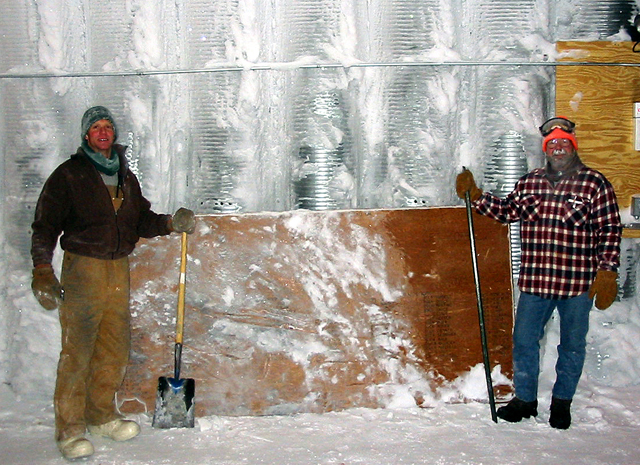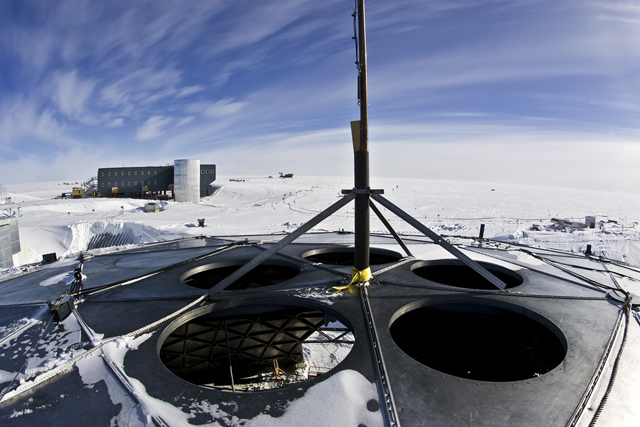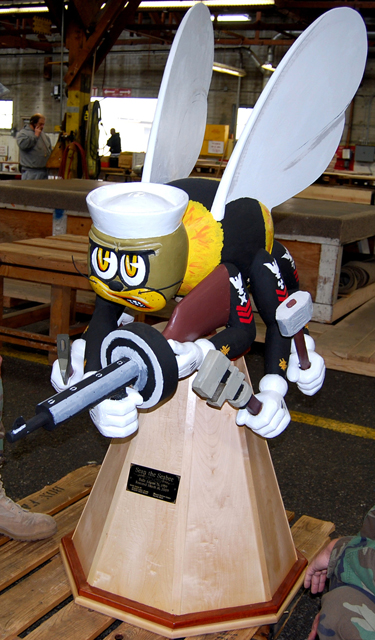|
Page 3/3 - Posted December 11, 2009
Coming downThat’s pretty much the plan, according to Brandon “Shaggy” Neahusan, construction manager for Raytheon Polar Services Co. (RPSC) “The overall method we will be using is to start at the top and peel it like an orange,” Neahusan said via-email from Antarctica. “In other words, we start at the top and move around the dome, panel by panel, clockwise disassembling until we get to the foundations.” The job — which also includes taking down Skylab, a separate, orange, boxy tower that housed different science experiments near the dome — will require a six-person crew. First, the piece to be removed will be rigged to a crane and then two people working from a lift will use abrasive saws from the inside of the dome to cut partially through the structural members. Once that team is safely out of the way, a second two-person team working from the exterior of the dome will finish cutting the piece free. The crane will then lower the pieces to the ground, where the other two workers will continue to disassemble the panels for eventual transport from South Pole by plane or tractor train. Neahusan said the primary challenge for such a job is safety. “Demolition is inherently dangerous work, so we take every action possible to mitigate the risks associated with it,” he said. “This is a handpicked crew that I’ve worked with for several seasons now, and as this is a very high-profile project, it’s my responsibility to not let my crew feel any of that pressure and just allow them to do their jobs.” Time and weather are the other obstacles. The project started in mid-November by clearing out the dome and moving snow away from outside perimeter for the heavy equipment to operate. Temperatures need to remain above minus 40 degrees Fahrenheit for the cranes and mechanical lifts to work properly — not always a guarantee, even in summer. “We plan to have both buildings down and packaged for shipment off continent by end of season,” Neahusan said. For posterityThe crown of the dome and the next two rows of polygonal panels will be saved for display at a new Seabee museum 
Photo Courtesy: Jerry Marty
Polies find a plywood board with the names of the Seabees who built the dome. The memento is now at the Seabee Museum at Port Hueneme, Calif.
“Disassembly will be accomplished by removing the bolted connections and using a tool called a collar cutter to snip the heads off the existing rivets and removing each component of the dome, documenting it for reassembly and crating the components for shipment to Port Hueneme,” Neahusan said. “The rest of the structure will be cut up and shipped off continent and be recycled.” Neahusan said that the NSF had tried to figure out a way to send the whole dome back to the United States for display at the Seabee museum or other locations interested in its history. However, the labor costs alone would have been six times more expensive, and “the amount of time it would take to do so would not fit into the Congressionally mandated end date of the South Pole Station Modernization effort, which is March 31st, 2010.” Marty, who has been working with the CEC/Seabee Historical Foundation the last few years on bringing the dome to Port Hueneme, said the entire dome likely wouldn’t fit in the new museum based on its current configuration. “It’s the old story of when you start to put things in a museum, it fills up pretty quick,” he said. The new museum’s concept is to suspend the dome near an exhibit focused on the polar history of the Seabees, according to Marty. The current museum, converted from two Quonset huts, displays various Antarctic artifacts, such as a 4-foot by 8-foot sheet of plywood with braided rope around the edges. The Seabees who built the dome burned their names into the wood, which a forklift tine had damaged at some point. A demolition crew discovered the memento while taking apart the buildings under the dome, Marty said. The new museum itself will be a “virtual” walk through of Seabee history. Visitors will follow in the Seabee’ footsteps, starting with basic training and then on to conflicts from World War II and the Korean War to Vietnam and the modern conflicts in the Middle East. Finally, the tour ends with a look into their humanitarian and civil projects. “The military campaigns are one thing, but the Seabees are unique because they’ve got this Antarctic-IGY piece of their historical background,” Marty noted. It would seem the dome is no longer for Polies alone. “I think it hit us harder when we saw the galley and all the buildings inside go away,” said Doug “Dog” Forsythe, a RPSC construction manager involved in the construction of the new station from the beginning in the late 1990s. “I hate to see it go, but I guess that’s progress.” Back 1 2 3 |
"News about the USAP, the Ice, and the People"



For USAP Participants |
For The Public |
For Researchers and EducatorsContact UsU.S. National Science FoundationOffice of Polar Programs Geosciences Directorate 2415 Eisenhower Avenue, Suite W7100 Alexandria, VA 22314 Sign up for the NSF Office of Polar Programs newsletter and events. Feedback Form |





